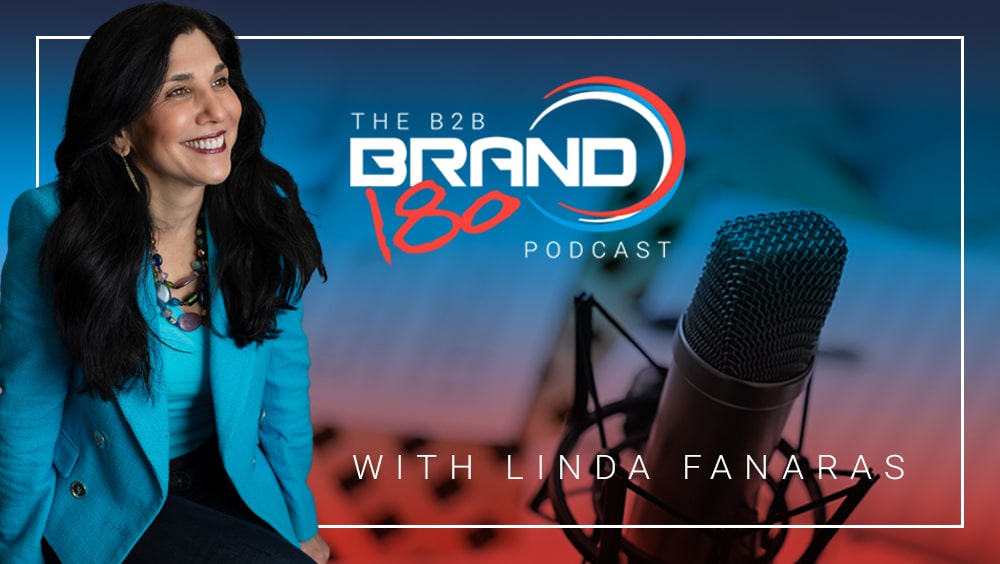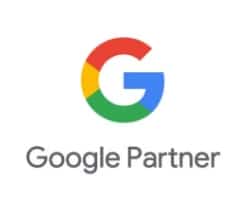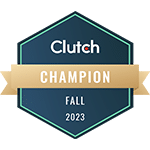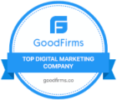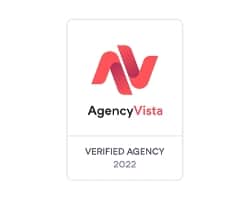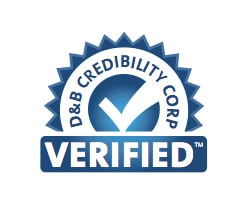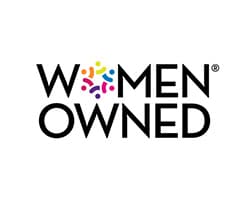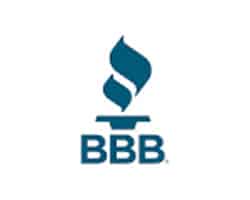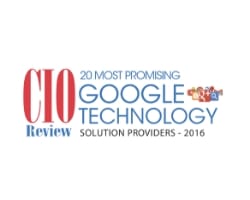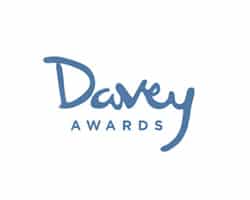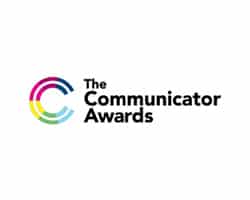In this episode of the B2B Brand180 podcast, Linda interviews Justin Rashidi from SeedX on the importance of data science in understanding and optimizing B2B marketing efforts.
The discussion covers key topics such as the significance of accurate attribution tracking, the necessity of a well-defined Ideal Customer Profile (ICP), and the potential misconceptions about the effectiveness of various marketing channels. Justin also shares insights on the value of integrating online and in-person marketing efforts and details on how to leverage CRM tools for better marketing outcomes.
This episode is a must-listen for marketers seeking to align their campaigns more effectively with business growth.
02:14 The Science Behind Marketing Success
03:25 Real-World Marketing Challenges and Solutions
04:30 Effective Campaign Strategies and Testing
13:37 Understanding CRM and Attribution Tracking
16:17 The Value of In-Person Marketing
https://www.linkedin.com/in/justin-rashidi/
Linda’s LinkedIn: https://www.linkedin.com/in/lindafanaras/
Millennium Agency: Brand Strategy | Marketing | Web Design: https://mill.agency
YouTube Channel: https://www.youtube.com/@mill.agency/
Linda’s Books:
Claim Your White Space
https://www.amazon.com/CLAIM-YOUR-WHITE-SPACE-CRITICAL-ebook/dp/B0CLK8VLYV
Passion + Profits: Fueling Business And Brand Success
https://www.amazon.com/Passion-Profits-Fueling-Business-Success-ebook/dp/B0CLLDDSNX/
Linda Fanaras:
Welcome to the B2B Brand180 podcast where we’ll discuss branding and marketing tools for business. My goal here today is to provide you with some transformative and innovative approaches that can help you make 180 degree shift in your marketing. So I’m Linda Fanaras and the owner of Millennium Agency, a branding and growth strategy firm, and host a B2B Brand180 podcast, and I’m bringing in Justin Rashidi. He’s the founder of SeedX. I’m super excited to talk to him. He has a digital marketing firm. He takes a real unique and scientific approach to marketing. He comes from a science and engineering background, and he has an analytical mindset, which works out great when it comes to marketing, and that seems to be his backbone to his success. Applying these methods to his success. So, welcome Justin. I’d love for you to take a couple minutes and tell the audience about yourself.
Justin Rashidi:
Hello, my name’s Justin, as Linda said at SeedX. I lead basically data science and then strategy. And so what that means is we work with organizations that help them better understand, how to structure their data, how to understand attribution, how to understand reporting, and ultimately how to activate that data into marketing channels.
Linda Fanaras:
That’s perfect. So today you’ll better understand, he’ll show you how to use the brains built-in triggers to get more people to say yes to your ideas. Really taking a look at some of the logical components of this and tying it back into, the emotion to really drive those purchasing decisions. And you’ll just learned a little bit more about how to get more people to say yes. So let’s talk about building an ICP. It’s your Ideal Customer Profile. And I think what’s key is maybe trying to figure out when you are building out these campaigns, is that an important factor?
Justin Rashidi:
Yeah, of course. yeah. Yeah. I mean, the answer is yes, it’s very important. Yeah. Can you, I mean, from a messaging standpoint to make sure that I, mean, yeah. I think brand positioning in the market and how the consumers see your brand in the market compared to others, and what that messaging is, actually quite important. Especially if you’re in a saturated field or there’s dominant players and you’re an up and coming player and you really need to differentiate yourself from, the established market.
Linda Fanaras:
Yeah, that’s great. So when you’re talking about taking a scientific approach to marketing, I know marketing is creativity and science all pulled together. When you speak about that, what do you mean exactly?
Justin Rashidi:
For us, what it means is, from a B2B perspective, it’s actually being able to track how deals are being created and what campaigns are actually generating those. So a lot of organizations they rely on in platform metrics in order to help inform them or they rely on impressions, click through rates and metrics that often aren’t always indicative of business growth. We see a lot of organizations that they feel like we’re, doing paid social, we’re doing paid search, we’re doing LinkedIn, we’re doing organic, we’re doing, whatever activity. And all those channels look good when they’re, everyone’s reporting all the teams report. But the leadership team feels the opposite, that like they’re not actually growing and it’s usually because there’s a disconnect between what’s actually functioning correctly and driving growth and what’s being reported. And so from us, that’s usually what it means. It’s like trying to connect the whole cycle so that way marketing activities actually drive business growth.
Linda Fanaras:
Right? Because there are so many different strategies and although there seems to be a lot of activity during one, from one strategy, maybe it’s just not really driving growth. So do you have any examples of maybe situation where that’s occurred, like maybe trying different tactics where you, one looks like it’s working really great, but it’s not, and you’ve been able to maybe uncover something that makes more sense.
Justin Rashidi:
Yeah, I mean, we see this every day. This one is like as of last week, we were just onboarding a new customer. They’re running paid social, they’re spending about 50 to a hundred thousand dollars a month, and they view that certain campaigns that intuitively they feel that these campaigns are, bringing in leads and, the platform metrics show that these campaigns are doing well. What we did though is we ended up tracking the leads from these campaigns all the way to what actually closed as customers. And what we actually uncovered was that the campaigns that seemed to be doing so, so were actually the ones that were generating the new business. And the ones that they thought that were doing so great, were not actually generating the new business. And that’s interesting. This can based off of Yeah. Creative or audience targeting. Right. And so we see this quite a bit, that there’s a disconnect between the platform metrics and then what actually is generating book calls or actual deals.
Linda Fanaras:
Yeah. Leads. Yeah. So how do you look at that? Because from a digital marketing perspective, if that’s what your focus is, you’ve gotta look at the messaging, you’ve gotta look at the creative, you’ve gotta look at how you’re setting up your campaigns. You’ve gotta look at the ROI. Are there certain things that you think your customer or a marketer should prioritize when they start to look at these campaigns?
Justin Rashidi:
Start to prioritize. In my personal opinion, I think the best thing to prioritize is actually understanding how you are connecting to the end result that the business wants to achieve. And I think that requires usually for marketers to go beyond like a typical understanding of marketing and actually be more of a business mind. And so I think people who I really respected marketing, they’re actually business leaders first and functional specialists. Second, and so they’re taking into account the growth or the direction of the business, and then they’re applying their function to it in a successful manner. I think that is actually like the approach I usually would recommend people to think about from a marketing perspective.
Linda Fanaras:
Yeah. So you’ve, worked with a lot of large size companies. What do you think kind of differentiates what you guys do versus other companies?
Justin Rashidi:
Every company at different stage just has different types of problems, right? And so generally, yeah, like if we’re dealing with a smaller company, usually they don’t even know what metrics to be tracking, how they should be thinking about those metrics. and then you get to like slightly larger where they kind of are tracking it, but it’s not great. And then you get to like really large organizations where they have so much data, they don’t actually know how to stitch it together and make. A story out of what is actually happening.
Linda Fanaras:
Yeah. Are there different approaches that you use that maybe other digital firms don’t use? I mean, there’s so many different things to choose from out there, and I think that might be part of the challenge for our clients that are out there trying to pick a medium and trying to figure out what strategy to use. Do you have any insight on that?
Justin Rashidi:
I mean, the answer is no. Every company that we have worked with, or I’ve interacted with the channels that are successful for them, sometimes they’re similar, but oftentimes you’ll find, oh, Google search works great here and horrible for this company. Yeah, LinkedIn is great here and good for this company. Event marketing in person marketing, right outbound. Can be actually vary depending on the market, like the space. And I think this kind of ties back to your first question of like, messaging IP and right. Do you believe that your customer will actually convert from that specific marketing activity? Right? And so there’s some obvious ones like, you know, you probably don’t need to post that much on TikTok if you’re like targeting like this very specific B2B buyer. But I think then the more narrow one is actually, there are specific industries and markets that outreach doesn’t work as successfully. And actually Google, like, you know, SEO generative engine now and stuff are actually much more successful for their companies. And yeah, I think people always wanna take default advice. Right. They’re like, oh, I hear LinkedIn’s good. So we should be on LinkedIn and Yeah. Oh, I hear this is great. Right. So we should be there and usually I’m just like, it could be true or could not be true. Right? Like, you really have to actually test and run a campaign pretty rigorously to remove the idea that whether it’ll be successful or not successful.
Linda Fanaras:
Yeah. You have to run it for a while, is what you’re saying.
Justin Rashidi:
I think the problem is that, there’s so many problems in marketing,
Linda Fanaras:
but
Justin Rashidi:
in terms of like channel testing, I think, I’ve seen two problems where the one that I see quite often is that we believe that this channel, it could be successful for you, but it was previously ran in a way where like the messaging wasn’t correct. Our audience target wasn’t correct. You were sending to like a landing page that like didn’t actually make sense for like this customer, right? And so the organization believes, oh, this channel doesn’t work for us. In actuality, like you didn’t really run the campaign that well. Right. And so that gets into do you believe that you ran the campaign successfully? And if so, then does that channel not work for you? It’s usually the questions that people have to debate.
Linda Fanaras:
Right. And that’s actually a great point. So if you were to kind of back this up for our audience a little bit, and like I said earlier, like I was asking you earlier about the ICP, I feel like there’s some certain steps that need to be taken, like. Who are you trying to go after? What are you trying to achieve? What do you need to say? How are you positioning yourself in the market? You know, is there something downloadable? Is there a landing page? What are the different mediums that make sense for your market? Do you have a certain basic process? The questions that you would ask around that, that you think would make sense for a marketer to know? Like maybe, and those might be the questions, I’m not sure. But, just from their perspective, if they had a takeaway and you said, well, you should definitely think about what your messaging is, number one, you better make sure that you’re targeting the right market. Number two, so maybe there’s some takeaways on that you could share.
Justin Rashidi:
I agree with all of those. I, think the only one that I would additionally add is where in the funnel are you expecting this person to be? Right? And so when you can have great messaging for your ideal customer, but are you really trying to push them to get on a demo and like you actually really need to be warming them up. They need to actually get more information about you. They should be watching a video or, like you’re saying, downloading a PDF or a lead magnet of some sort. I think a lot of companies, they treat marketing like sales, which is like this eager beaver, like, oh, they’re gonna close right away. And good marketing in my opinion. Like Al also has like the idea that you are reaching like your entire addressable market, not just like the small percentage of people who are in market. And I think besides what you’re talking about with messaging landing page, it’s like. Is this campaign reaching the top of the funnel and truly awareness? Is it middle of the funnel people who are kind of like in the search phase? Or is it people who are really understanding like the product space and they’re looking to get a solution soon? And I think that’s the last, and that usually ties into how you build messaging out too.
Linda Fanaras:
Right. Now, that makes sense. What’s your thought process, because I keep hearing contradictory data on like landing pages versus creating the call to action within the existing website. Do you have any thoughts and feedback on that, or does it vary?
Justin Rashidi:
Yeah, it varies obviously. So standard, typical advice is that landing pages perform better than a website page, but my personal experience has not proven that to be content as true. Yeah. So I find in my personal, like me as an individual too. I like, being able to discover all the information. I think that this idea of squeeze pages, and maybe this is like pretty anti, what people generally say is people believe that there’s no attention span and people will just need to see one form and they’ll submit it. Right. And I have never really had that happen. I usually, it’s like for us, what I see work is video content, long form articles explaining things, different types of like demos or like interactive tools. And then they can browse the website and then submit the form on the website. And usually from quality standpoint, you don’t wanna be like tricking a bunch of people to try to submit the form. It’s like you wanna get people who are actually interested in like buying. And so, right. I don’t know. Do you have a different opinion? Is your experience different?
Linda Fanaras:
you know, I could be totally wrong, but I always felt like if you could build a contact us on the top of an existing website page, so let’s say you’re driving them to a specific page within the website that you’re actually trying to market. If you can create a sticky head. Yeah, a sticky header or something on the top. That would be your best bet. I mean, we’ve done landing pages before and we haven’t had the best luck with that. Or at least if we do them, we need to make sure that the contact us form is above the fold. Right? So there’s some key things like takeaway. Some people will build out landing pages and the contact us is at the bottom of the page. It’s like, to your point, no attention span. So you’ve gotta figure all that into play as well. So I’m not sure if you’ve also experienced that.
Justin Rashidi:
Yeah, I don’t know. I, just see, when we’re looking at like time on page and these different types of things, like I see people spend more. If we’re thinking about what is a quality touchpoint, isn’t it someone who’s interacting for a longer period of time? Like visiting more things, reading like more content. And so I just always have yelling the, problem with landing pages is they’re supposed to purposely not guide you anywhere, right? Like you’re supposed to just be here and it’s like a yes no. Right?
Linda Fanaras:
Right.
Justin Rashidi:
And so does that lower like the audience trust, like when you’re trying to like force this behavior? And I think consumers are smarter.
Linda Fanaras:
Yeah.
Justin Rashidi:
On the front end Yeah. And so from like a landing page perspective, again, the answer though is test, right? Like, you should test a landing page. Yeah. Right? You should test like web, a website and just test them both. So that’s, but I’ve tested it a lot against a lot of campaigns and unless we’re just really bad at landing pages, which could be true the results that we generally see is that, yeah, like having some type of easy access form where they can peruse and get information and then submit whenever they want performance better.
Linda Fanaras:
Yeah, but to your point, I think if they’re on the website, they can get as much more, you know, they can get a lot more information that they want. Otherwise, like they may get a landing page and then they have to figure out where the website is and they may toggle back and forth and by that time they’re sick of it. So I think, to your point, that makes sense. So are there any other strategies or tactics that you think would be valuable to share that you think, when you talk about attribution and things like that and the analytics component and tying that into the creativity, can you speak a little bit about that? Maybe things that you found really work well or don’t work?
Justin Rashidi:
For us depending on the business side, there’s two things that we’re usually like talking about. It’s like how you’re setting up the CRM or how you’re like interacting with like a data warehouse. And so, for most companies, they aren’t understanding that their CRM should actually help them a lot with attribution.
Linda Fanaras:
Yep.
Justin Rashidi:
And so, the advice is really like, you should understand your CRM probably better than you think you should under understand your CRM. And it should be a more impactful tool in your organization than, if you have a CRM, it’s just sitting there, not doing much. Then like you’re probably actually not running your marketing campaigns to the best effect because
Linda Fanaras:
Right, right. Yeah.
Justin Rashidi:
Most attribution tracking whether you’re using HubSpot or Salesforce or Dynamics. Right. I have a preference for HubSpot because I like their attribution. Like that’s built in. Yeah. But all of them can do attribution tracking with different types of setups, but a lot of people don’t. Know that, they should be like utilizing it in that way. They think about it from tracking deals and these things, right. But if you’re leveraging your CRM correctly in marketing, it actually is like your major hub for attribution tracking.
Linda Fanaras:
Can you explain to the audience what attribution tracking is?
Justin Rashidi:
Yeah. So attribution tracking is, say we’re running an ad on LinkedIn, they click this ad. We should be able to understand what was the campaign, what was the audience, what was the creative that actually got that person to the website and, made them convert into a contact. Additionally, attribution should be multi-touch, right? So if you, yes, you should understand. Okay. Like their first touch was this. Right? So what’s driving a first touch point and then what’s driving a second touch point? Right. And so some of the big ones, and, no, I’ll add one more on that is we see where, okay, like the first touch point was a branded search. And well, like that’s only because it was like click based. What actually happened was there, there was another impression somewhere in that like customer journey that actually made them go to Google and track that. Right. And so another part of attribution is we also like self-reported attribution. So how did you hear about us? And then we like to understand basically, what do we see in the CRM from these attribution touchpoints? What do we see in the marketing platforms? Like what it’s attributing, right. What are self-reporting? How does that reflect against. These things. And all of it’s to just help drive better understanding of what is effective.
Linda Fanaras:
Yeah. What’s working and what’s not. So you can double down on what’s working. Yep. Awesome. No, that’s great. That’s great. so I think that’s been great. Thank you so much, Justin. Are there any other key factors that you think would be helpful to our audience that we haven’t covered today?
Justin Rashidi:
Ooh, in general
Linda Fanaras:
trick question. Huh.
Justin Rashidi:
Yeah, I don’t know. I was gonna say, one of the ones that I think I have been talking to organizations more about, is getting off of online and actually like being in person.
Linda Fanaras:
Okay. Yeah.
Justin Rashidi:
Like, wow.
Linda Fanaras:
that’s interesting. Okay.
Justin Rashidi:
Yeah. that, that, that’s like the, I mean, I believe a lot, obviously I do a lot of online marketing, so I believe. But I’ve seen in-person events just really outcompete, like when you think about like the investment, like this investment of $40,000 or something, right? Yeah. And if you took the same investment and put it into an online channel. But a lot of times we do see that in-person events actually will outperform, online campaigns. Right. And so, yeah, I think from like a general business building perspective, I think that people online feels easy. But maybe it’s, also getting competitive, right? And so I think thinking about your business and other ways outside of online marketing is actually important as well now.
Linda Fanaras:
Yeah, and I think, if you can double down and you can actually do online, let’s say, so you have a client going to a conference and you’re actually doing some geotargeting around a conference, and then you’re, actually going around to the conference areas, to the booths and doing introductions and things like that, so you’re just, you’re hitting them multiple times from different directions, which is always key to marketing anyway. So things like that I think make complete sense. And I, agree with you. I think there’s gonna be more of that. I think, digital can be challenging. I think it works great in a lot of instances, but some, it’s more difficult. But, yeah. No, absolutely. So that’s been great. So thank you so much, Justin. It’s been great to hear from you today. I appreciate all the insight that you gave to our audience. So I would love for you to share with everybody how they can get in touch with you and your agency.
Justin Rashidi:
Yeah, you can just email me at [email protected] if you are interested in having a conversation with us.
Linda Fanaras:
That’s awesome. All right, well thank you for listening into the B2B Brand180 podcast today. I hope you got some great digital marketing insight and you can take that, put that to work as soon as possible. If you need to get in touch with me, you can visit me at mill.agency or connect with me on LinkedIn. Thank you. And happy marketing.





